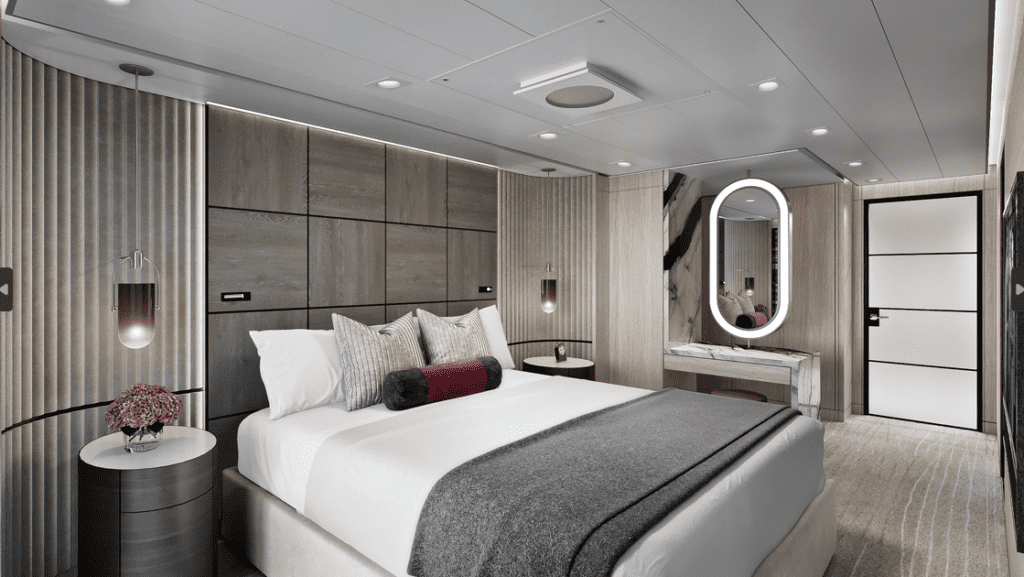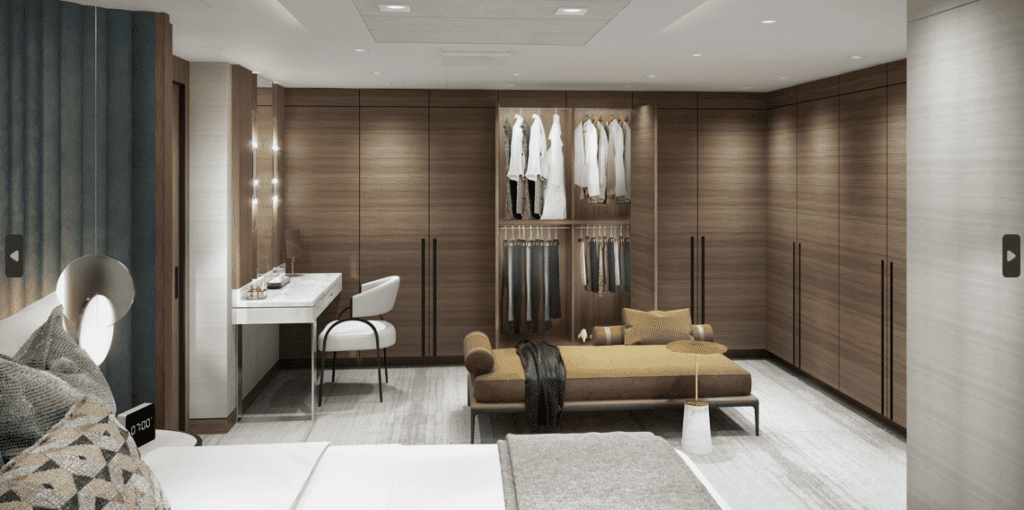
Whether it’s a hotel or a luxury vacation at sea, Studio DADO puts the guest first. But what’s the difference in designing transcendent hospitality experiences on land versus a ship? And what can land-based hotels learn from cruise ships to fully harness the power of design? Our founders weigh in.
Travel is bigger than ever. Hospitality organizations are hiring at the fastest rate in years. There’s no doubt in anyone’s mind that an amazing guest experience is what sets some trips apart. But what about those incredible guest experiences at sea? Why are many cruise lines enjoying 100-110% occupancy rates? Why do people go back on the same cruise line, and even the same ship, again and again?
And, perhaps the bigger question for the hospitality sector, what can hotels take from the cruise model to enhance their own guest experiences?
First and foremost, whether we’re designing for a land-based hospitality client or a cruise operator, our overall plan of attack is consistent. We approach everything from the perspective of the guest. We prioritize collaboration between ourselves and our clients. And we argue amongst ourselves. But we bring new ideas to the table until the best one comes out on top.
With that said, there are some key differences when creating spaces for land versus sea. For one thing, the idea of a sense of place is very different in a building that will stand in the same place for decades versus a cruise ship that may change continents every few weeks.
In our view, a hotel—and especially a resort—should tell you something about its place. It should speak to the locale. We don’t necessarily want to be overly thematic or heavy-handed, but we do want to avoid the generic, homogenous looks we’re seeing everywhere. When you walk into your hotel, you should know that you’re in New York. Or Tucson. Or Miami. And not just another copy of the last hotel you stayed in. We create that elusive sense of place through custom artwork, landscaping and a million other details that allow the hotel to essentially “co-brand” with the city or the region.

Pictured: Oceania Vista, Oceania Suite
That sense of place on a ship is a little bit different. Particularly with our cruise clients that run longer itineraries, the ship could be in San Diego and Hawaii one month and then Asia and Europe the next. Instead of reacting to a specific place when designing the interior spaces, we take on a cosmopolitan sensibility, using art, texture, light and everything else in our designer toolkit to give a ship a sense of place in its own right.
Every project type has rules and regulations, especially when it comes to health and safety. Cruise ships are really in their own category. On a ship, there is nowhere to go in an emergency, apart from the lifeboats, so preventing an emergency before it happens is paramount. Every material is fire rated, of course, but also has to be able to withstand water, weather and weight restrictions. This is clearly a different level of concern in a land-based hotel, but what hotel teams can adopt is the thorough testing and comprehensive selection process to make sure spaces and materials stand the test of time, never compromise the environment and always enhance the guest experience.
Perhaps even more relevant to the land-based hospitality world, the lower ceilings on a cruise ship mean we have to think in new ways to make the space feel open, bright and airy. Even in a land-based hotel, where we typically see guestroom ceiling heights of 8-9 feet, having mastery of light and space can make a huge difference. We can make a room feel more spacious or brighter or cozier than it really is. And, forgive us for saying this, the lighting in most land-based projects is dismal. We make good lighting a priority because we have to.
Traditionally, storage on cruise ships is notoriously tight. And in hotels? It’s so standardized that it’s boring. We have completely rethought the way we incorporate storage solutions so that it feels like custom furniture. It offers far more space than guests typically expect. And it is especially appreciated on some of the longer itineraries, where passengers almost always unpack their belongings. In our view, many luxury hotels can learn from cruise ships that maximizing storage, space and room flow create an elevated guest experience.

Pictured: Oceania Vista, Vista Suite
After speaking with many cruise guests over the years, the reason we hear that they come back again and again is the level and quality of service. It’s personal. And truly, there is no comparison. On a ship, the staff get to know the guests as a matter of course. They know their names before they even arrive. They pay attention to preferences. And guests feel at home when they can head to the coffee shop or the bar and order their “usual.” We also surmise that this general feeling of connection is the foundation for the overall sense of community aboard a ship—people strike up conversations with strangers and get to know one another in a way that would be unheard of in a hotel.
This is how, coupled with beautiful, functional spaces, cruise lines are able to build a following of fiercely loyal repeat customers and brand ambassadors.
In hotels, even in the luxury tier, let’s just say our experiences have been less robust. At some point, it feels as though many hotels have decided that isolation and anonymity were part of their brand. The place where everybody knows your name? This is not it. If land-based hotels want to compete with cruise lines. If they want to become a destination in themselves that people return to again and again, then they will have to invest in personalized, genuinely warm customer service.
Now, we recognize that great service isn’t directly correlated to design. But through the right layouts, beautiful spaces and comprehensively functional back-of-house operations, it is far easier to attract and retain the most dedicated service workers. And it is much easier for them to do their jobs well. If hotels can learn from cruise ships that this all adds greater value than cost, they can start to harness the full power of hospitality design.
Featured Image: Regent Grandeur Master Suite | Image Credit: Studio DADO